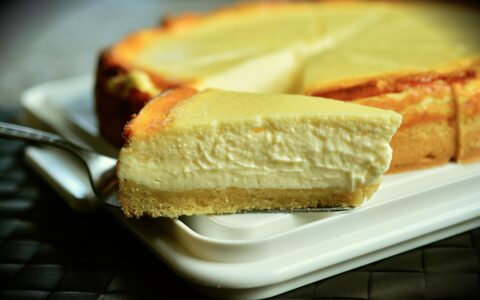
Win Your Next Pageant
Thank you for reading this post, don't forget to subscribe!Get Pageant Questions Written By A Miss Universe Judge

The Art of the Croissant: A Masterclass in French Patisserie
Few pastries embody culinary craftsmanship like the croissant—its golden, flaky layers and buttery aroma symbolize the pinnacle of French baking. This iconic viennoiserie (a cross between bread and pastry) didn’t actually originate in France, but rather evolved through centuries of cultural exchange, technical innovation, and obsessive perfectionism. With over 80 layers of dough and butter, a proper croissant is a testament to patience and precision, where science and tradition collide to create edible architecture.
A Rolled History: From Austrian Kipferl to French Icon
The croissant’s journey begins not in Paris, but in Vienna:
- 13th Century: Austrian bakers created kipferl, a crescent-shaped yeast bread celebrating victory over Ottoman invaders (the shape mimicked the Islamic crescent moon).
- 1839: Austrian entrepreneur August Zang opened Boulangerie Viennoise in Paris, introducing buttery, laminated kipferl.
- Early 1900s: French bakers replaced yeast with layered pastry dough, creating the modern croissant.
- 1920s: The addition of levain (sourdough starter) by Parisian bakers added complexity.
Today, UNESCO recognizes the French baguette and its cousins (including croissants) as an “intangible cultural heritage.”
The Science of Layers: Why Technique is Everything
Creating the perfect croissant requires understanding its edible engineering:
1. Lamination Alchemy
- Butter Block: High-fat (82-84%) European-style butter has less water, preventing soggy layers.
- Turns: Each “fold” (single, double, or book fold) multiplies layers exponentially. Three folds create 81 layers.
- Temperature Control: Dough must stay cold enough to keep butter solid but pliable (60-68°F/16-20°C).
2. Fermentation Magic
- Yeast Activity: Produces CO₂ that lifts layers during baking.
- Slow Proofing: Overnight fermentation develops flavor without over proofing.
3. Oven Spring
- Steam Creation: Butter’s water content evaporates, separating layers.
- Maillard Reaction: Sugar and proteins brown at 310°F (154°C), creating crispness.
Cultural Icon: More Than Just Breakfast
In France, croissants are a way of life:
- Le Petit Déjeuner: Served plain or with jam, never stuffed.
- Quality Tests: A perfect croissant should:
- Weigh 1.8-2.1 oz (50-60g)
- Have 5-7 visible spirals
- Shatter audibly when broken
Globally, it inspires variations:
- USA: Giant, stuffed versions (almond, chocolate, ham-and-cheese).
- Japan: Matcha or sakura-infused dough.
Classic French Croissants Recipe ownthatcrown.com
Crisp, honeycombed, and shatteringly flaky—worth every minute of effort.
Prep Time: 45 mins (+ 12-18 hrs chilling/proofing)
Cook Time: 18-20 mins
Yield: 12 croissants
Equipment Needed (Amazon Deals, Buy Now, Click On Link Below)
- Food Processor
- Electric Mixer
- Stand Mixer (with Dough Hook)
- Rolling Pin (preferably French-style without handles)
- Ruler (for precise measurements)
- Pastry Brush (for egg wash)
- Baking Sheets (2) + Parchment Paper
- Plastic Wrap (for chilling)
- Sharp Knife or Pizza Cutter (for trimming)
—————————————————————————————————————————————–
Ingredients
For the Dough (Détrempe):
- 4 cups (500g) bread flour (T55 or high-protein)
- ½ cup (120ml) cold whole milk
- ½ cup (120ml) cold water
- ¼ cup (50g) granulated sugar
- 2 tsp (10g) salt
- 1 tbsp (10g) instant yeast
- 2 tbsp (30g) unsalted butter, softened
For the Butter Block (Beurrage):
- 1½ cups (340g) high-fat European butter (like Plugrá), chilled
- 2 tbsp (15g) flour (for dusting)
For Finishing:
- 1 egg + 1 tbsp water (egg wash)
Step-by-Step Instructions
1. Make the Dough
- Mix flour, sugar, salt, and yeast in a Stand Mixer .
- Add milk, water, and softened butter; knead 5 mins until smooth.
- Shape into a rectangle; wrap and refrigerate 1 hour.
2. Prepare Butter Block
- Pound cold butter between parchment into a 7×7-inch (18x18cm) square.
- Chill 20 mins until firm but bendable.
3. Laminate
- Roll dough to 10×15 inches (25x38cm). Place butter block on one side.
- Fold like a letter: left side over butter, right side over left. Seal edges.
- First Turn: Roll to 8×24 inches (20x60cm). Fold in thirds (“book fold”). Chill 1 hour.
- Repeat two more turns, chilling between each.
4. Shape & Proof
- Roll dough to 16×12 inches (40x30cm). Cut into 12 triangles (4×8 inches/10x20cm each).
- Roll triangles from base to tip; curve into crescents.
- Proof at 75°F (24°C) 2-3 hours until doubled (no poke rebound).
5. Bake
- Preheat oven to 400°F (200°C).
- Brush with egg wash. Bake 18-20 mins until deep golden.
Pro Tips
✔ Butter Temp: Should bend without cracking (like modeling clay).
✔ Slow Proof: For flavor, proof overnight in fridge (then 1 hr at room temp).
✔ Steam: Place a tray of boiling water in oven for first 5 mins.
Troubleshooting
- Butter leaks? Dough was too warm during lamination.
- Dense layers? Underproofed or overworked dough.
Serve warm—listen for the crunch! 🥐
Why Croissants Captivate
- Textural Contrast: Shattering crust vs. tender interior.
- Labor of Love: 12+ hours for 81 layers.
- Cultural Symbol: The epitome of French art de vivre.
Ready to Bake? This recipe honors tradition while demystifying the process. Whether you’re a novice or a pro, each fold brings you closer to patisserie perfection.
Fun Fact: The world’s largest croissant weighed 121 lbs (55kg) and measured 5.5 ft (1.7m) long! Will yours be next? 🎉



 Subscribe to Our RSS Feed
Subscribe to Our RSS Feed



